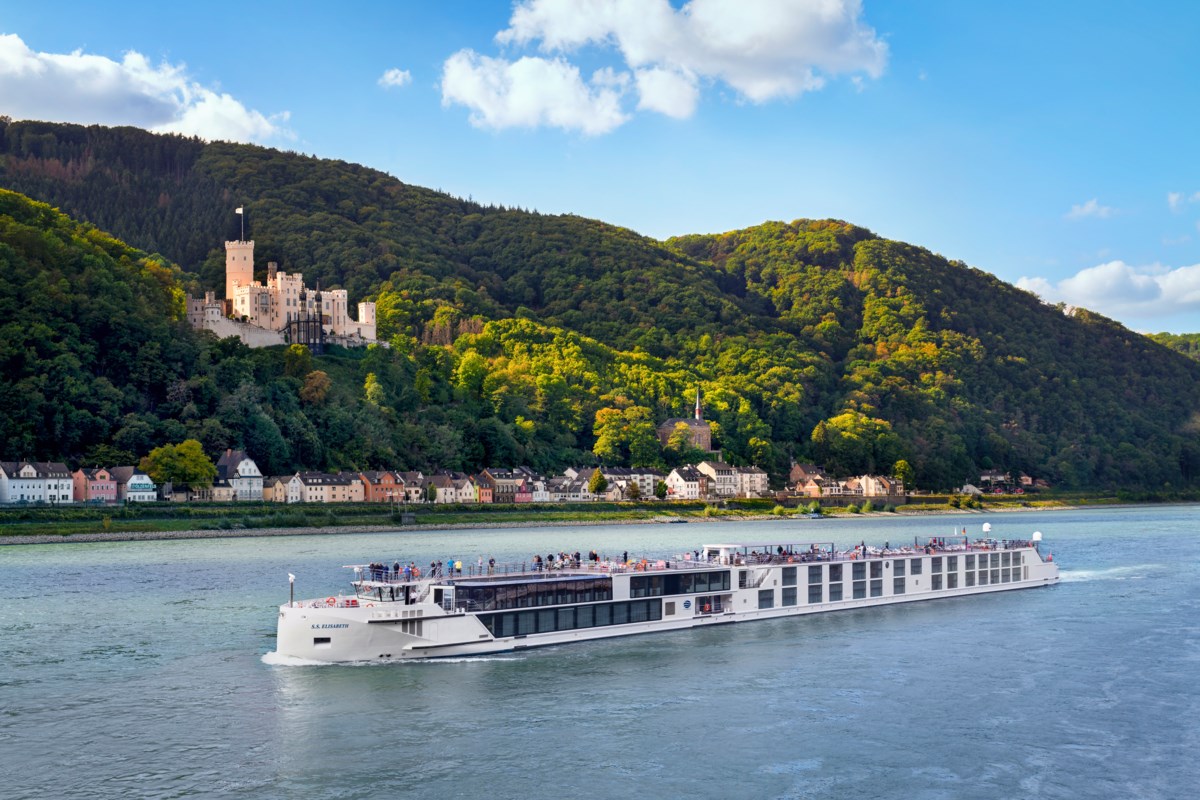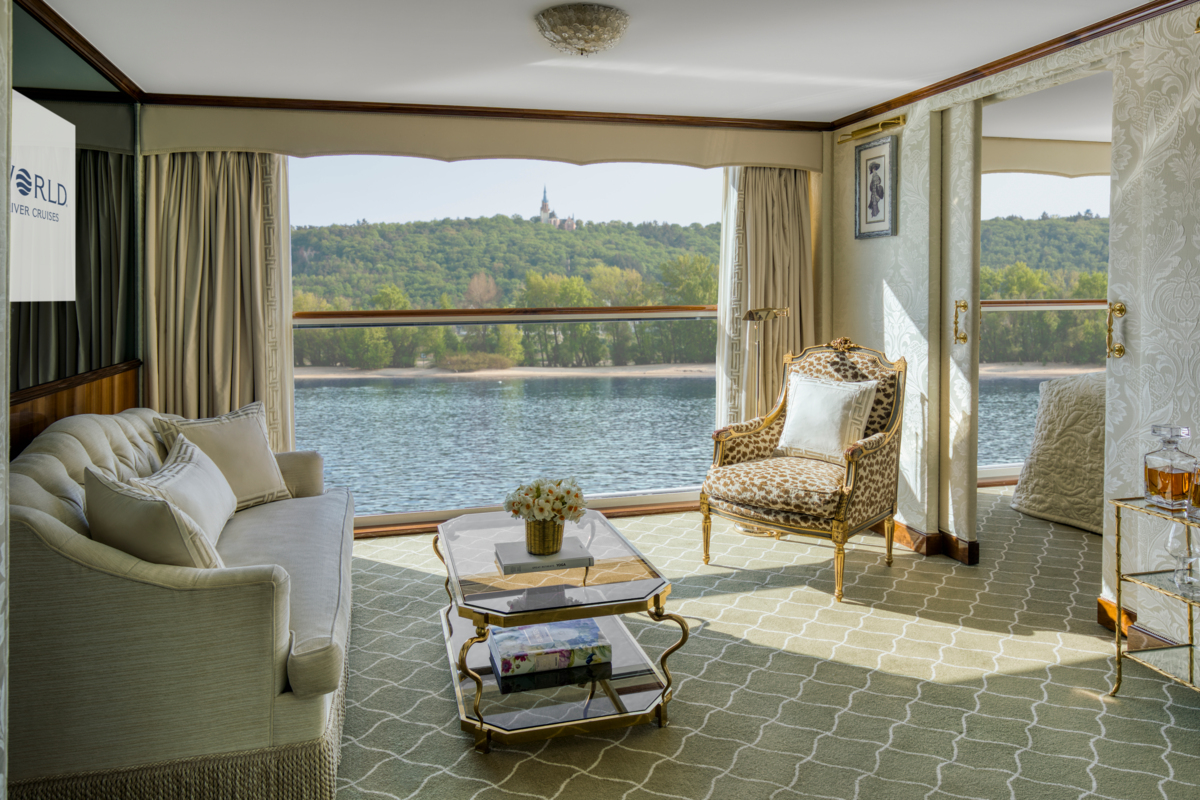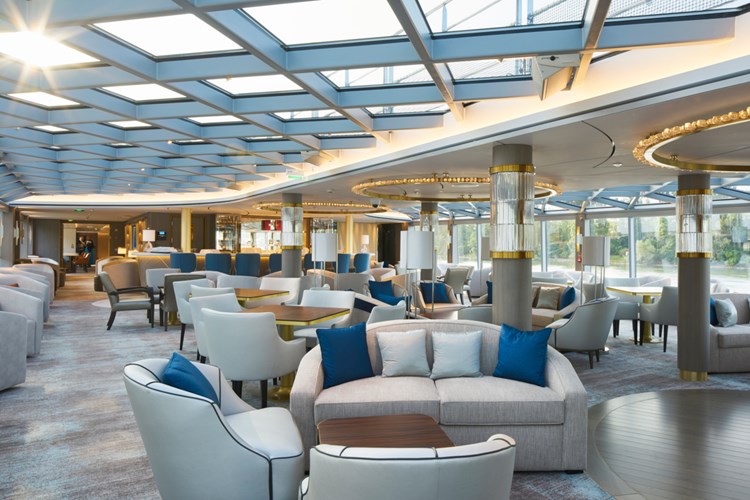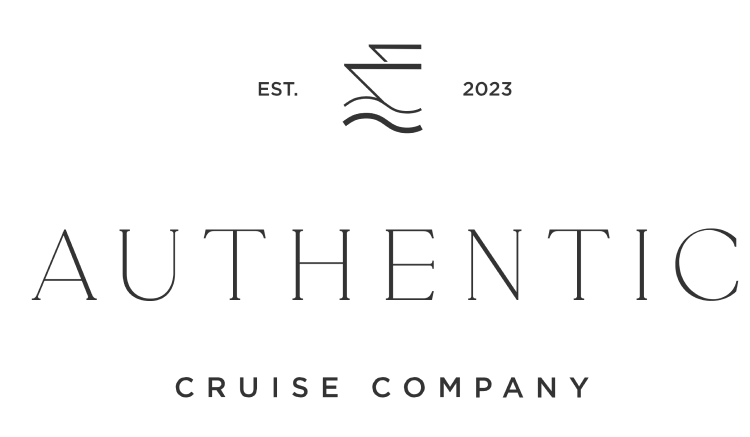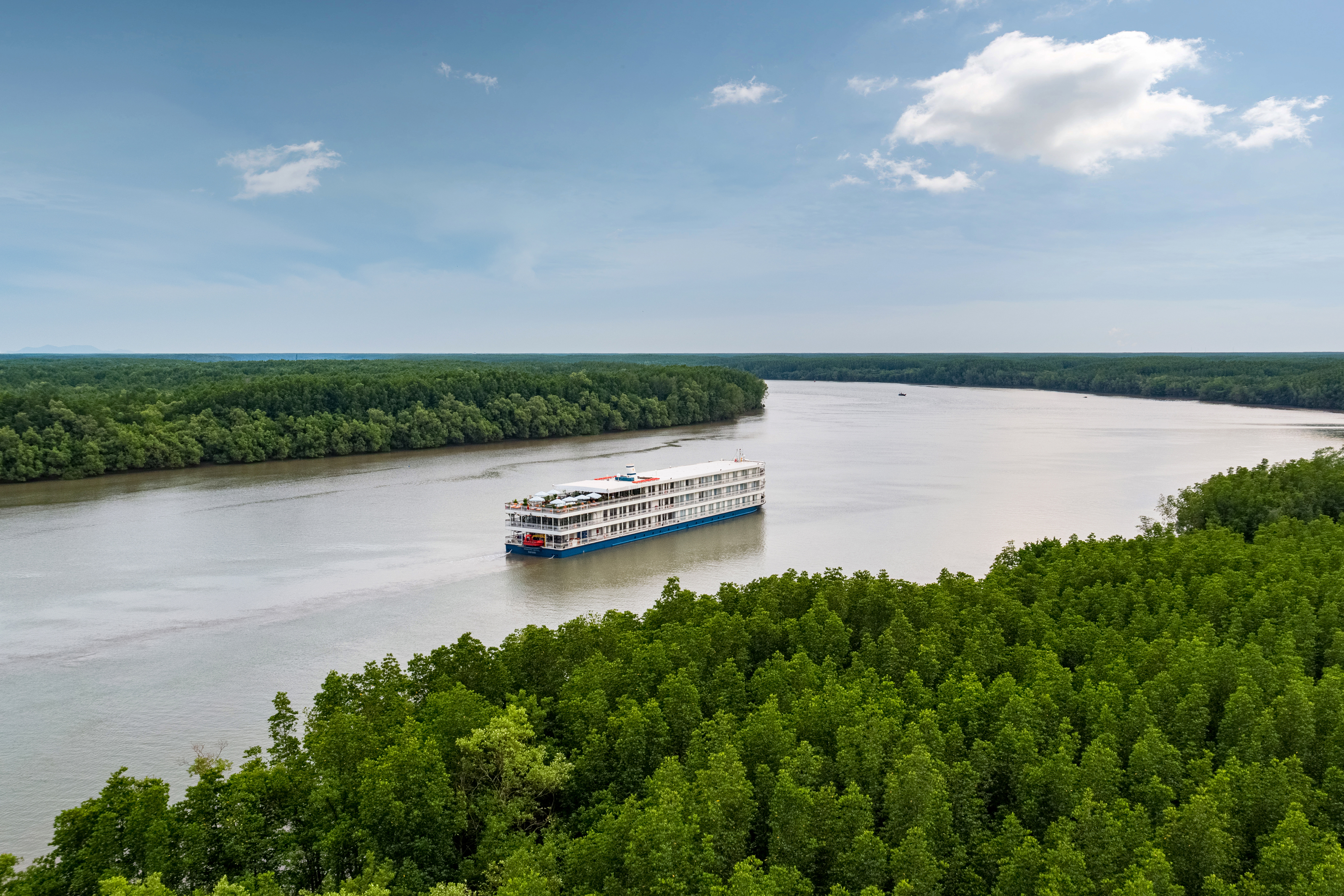Itinerary
Day programme:
Arrive at the Hanoi airport. If your cruise/tour package includes a group arrival transfer or if you have purchased a private arrival transfer, you will be greeted by a Uniworld representative and transferred to your luxury accommodations, the Sofitel Legend Metropole Hanoi Hotel.
Day programme:
Hanoi’s elegant boulevards are lined with trees and handsome buildings, as you’ll see on today’s fascinating tour of the city. At the same time, this lively cultural center—Vietnam’s capital city—is replete with bustling streets, food vendors, museums, and historic sites, making for an intriguing study in contrasts that rivals any other metropolitan destination.
Day programme:
Enjoy free time in Hanoi before your flight to Siem Reap, Cambodia, where you will be transferred to your luxury hotel, the Sofitel Angkor Phokeethra Golf & Spa Resort.
Day programme:
Today is a bucket list kind of day as you explore the ancient temples of Angkor Wat, a gigantic religious complex that is now a UNESCO World Heritage Site.
Day programme:
Today you will enter the spectacular remnants of Angkor Thom, the royal city. Built during the heyday of the Khmer dynasty in the 12th century, this extraordinary complex of Hindu and Buddhist monuments was once lost to the world for many years, hidden under dense jungle vines.
Day programme:
Today, you’ll have free time to explore Siem Reap, a place name that means, literally, “Defeat of Siam”—which tells you something of its history. It is the gateway to Angkor, the legendary archaeological site. Later check out of your hotel and transfer via executive motorcoach to Kampong Cham where you’ll embark on the beautiful Mekong Jewel—your elegant home for the next seven nights—and set sail on the beautiful Mekong.
Phnom Penh, Cambodia’s busy capital, sits at the junction of the Mekong and Tonlé Sap rivers. It was a hub for both the Khmer Empire and French colonialists. On its walkable riverfront, lined with parks, restaurants and bars, are the ornate Royal Palace, Silver Pagoda and the National Museum, displaying artifacts from around the country. At the city’s heart is the massive, art deco Central Market.
Day programme:
Today is a celebration of Cambodia’s bright future. You’ll meet young children at a local school and friendly villagers in their homes, and have a rare opportunity to receive an unforgettable water blessing from local Buddhist monks.
Phnom Penh, Cambodia’s busy capital, sits at the junction of the Mekong and Tonlé Sap rivers. It was a hub for both the Khmer Empire and French colonialists. On its walkable riverfront, lined with parks, restaurants and bars, are the ornate Royal Palace, Silver Pagoda and the National Museum, displaying artifacts from around the country. At the city’s heart is the massive, art deco Central Market.
Day programme:
Today, you’ll discover the thriving capital of the Kingdom of Cambodia, Phnom Penh. It stands at the juncture of three captivating rivers and represents a dizzying blend of architectural styles—French colonial, Khmer, modern, and everything in between. Here, you’ll find an alluring riverside esplanade amid numerous bewitching Buddhist temples, palaces, and artifacts.
Phnom Penh, Cambodia’s busy capital, sits at the junction of the Mekong and Tonlé Sap rivers. It was a hub for both the Khmer Empire and French colonialists. On its walkable riverfront, lined with parks, restaurants and bars, are the ornate Royal Palace, Silver Pagoda and the National Museum, displaying artifacts from around the country. At the city’s heart is the massive, art deco Central Market.
Day programme:
Today’s featured excursion may be the most profound and memorable experience of your entire journey. You’ll learn about the infamous Killing Fields of the Khmer Rouge and visit a former school-turned-prison that is now a genocide museum.
Day programme:
You leave Cambodia behind and cross into Vietnam today, delving into a region where traditional and modern lifestyle elements mingle: Agriculture may still reign supreme, but TV satellite dishes dot rooftops of houses built on stilts. You’ll visit the local island village of Hong Ngu, a major producer of the traditional Khmer scarves located not far from the Vietnam-Cambodia border. Since they’re woven in many homes around the village, you’ll have the opportunity to see the process first-hand. You’ll also stop at a local temple dedicated to a unique religion founded in this area of Vietnam, Hoa Hoa.
Day programme:
Following breakfast, you’ll venture to Gieng Island, where you’ll experience how a local family makes incense sticks and the conical hat. Later, your journey continues via sampan, where you’ll observe the daily routines of the villagers in Sa Dec and visit a colorful temple, the home of Mr. Huynh Thuy Le.
Day programme:
Today, you’ll witness the hustle and bustle of delta river life on a unique excursion created exclusively for Uniworld guests, where you can see how local farmers weave sedge hats, decorate bonsais, and more.
Romantically referred to by the French as the Pearl of the Orient, Ho Chi Minh City today is a super-charged city of sensory overload. Motorbikes zoom day and night along the wide boulevards, through the narrow back alleys and past vendors pushing handcarts hawking goods of all descriptions. Still called Saigon by most residents, this is Vietnam’s largest city and the engine driving the country’s current economic resurgence, but despite its frenetic pace, it’s a friendlier place than Hanoi and locals will tell you the food—simple, tasty, and incorporating many fresh herbs—is infinitely better than in the capital.This is a city full of surprises. The madness of the city’s traffic—witness the oddball things that are transported on the back of motorcycles—is countered by tranquil pagodas, peaceful parks, quirky coffee shops, and whole neighborhoods hidden down tiny alleyways, although some of these quiet spots can be difficult to track down. Life in Ho Chi Minh City is lived in public: on the back of motorcycles, on the sidewalks, and in the parks. Even when its residents are at home, they’re still on display. With many living rooms opening onto the street, grandmothers napping, babies being rocked, and food being prepared, are all in full view of passersby.Icons of the past endure in the midst of the city’s headlong rush into capitalism. The Hotel Continental, immortalized in Graham Greene’s The Quiet American, continues to stand on the corner of old Indochina’s most famous thoroughfare, the rue Catinat, known to American G.I.s during the Vietnam War as Tu Do (Freedom) Street and renamed Dong Khoi (Uprising) Street by the Communists. The city still has its ornate opera house and its old French city hall, the Hôtel de Ville. The broad colonial boulevards leading to the Saigon River and the gracious stucco villas are other remnants of the French colonial presence. Grisly reminders of the more recent past can be seen at the city’s war-related museums. Residents, however, prefer to look forward rather than back and are often perplexed by tourists’ fascination with a war that ended 40 years ago.The Chinese influence on the country is still very much in evidence in the Cholon district, the city’s Chinatown, but the modern office towers and international hotels that mark the skyline symbolize Vietnam’s fixation on the future.
Day programme:
Experience how ancient history melds with the boisterous present in Vietnam’s largest city, where skyscrapers tower over ancient temples and motorbikes putter along picturesque alleys.
Romantically referred to by the French as the Pearl of the Orient, Ho Chi Minh City today is a super-charged city of sensory overload. Motorbikes zoom day and night along the wide boulevards, through the narrow back alleys and past vendors pushing handcarts hawking goods of all descriptions. Still called Saigon by most residents, this is Vietnam’s largest city and the engine driving the country’s current economic resurgence, but despite its frenetic pace, it’s a friendlier place than Hanoi and locals will tell you the food—simple, tasty, and incorporating many fresh herbs—is infinitely better than in the capital.This is a city full of surprises. The madness of the city’s traffic—witness the oddball things that are transported on the back of motorcycles—is countered by tranquil pagodas, peaceful parks, quirky coffee shops, and whole neighborhoods hidden down tiny alleyways, although some of these quiet spots can be difficult to track down. Life in Ho Chi Minh City is lived in public: on the back of motorcycles, on the sidewalks, and in the parks. Even when its residents are at home, they’re still on display. With many living rooms opening onto the street, grandmothers napping, babies being rocked, and food being prepared, are all in full view of passersby.Icons of the past endure in the midst of the city’s headlong rush into capitalism. The Hotel Continental, immortalized in Graham Greene’s The Quiet American, continues to stand on the corner of old Indochina’s most famous thoroughfare, the rue Catinat, known to American G.I.s during the Vietnam War as Tu Do (Freedom) Street and renamed Dong Khoi (Uprising) Street by the Communists. The city still has its ornate opera house and its old French city hall, the Hôtel de Ville. The broad colonial boulevards leading to the Saigon River and the gracious stucco villas are other remnants of the French colonial presence. Grisly reminders of the more recent past can be seen at the city’s war-related museums. Residents, however, prefer to look forward rather than back and are often perplexed by tourists’ fascination with a war that ended 40 years ago.The Chinese influence on the country is still very much in evidence in the Cholon district, the city’s Chinatown, but the modern office towers and international hotels that mark the skyline symbolize Vietnam’s fixation on the future.
Day programme:
Today’s featured excursion provides a fascinating glimpse of the Viet Cong’s vast network of incredibly narrow tunnels dating back to the Vietnam War.
Romantically referred to by the French as the Pearl of the Orient, Ho Chi Minh City today is a super-charged city of sensory overload. Motorbikes zoom day and night along the wide boulevards, through the narrow back alleys and past vendors pushing handcarts hawking goods of all descriptions. Still called Saigon by most residents, this is Vietnam’s largest city and the engine driving the country’s current economic resurgence, but despite its frenetic pace, it’s a friendlier place than Hanoi and locals will tell you the food—simple, tasty, and incorporating many fresh herbs—is infinitely better than in the capital.This is a city full of surprises. The madness of the city’s traffic—witness the oddball things that are transported on the back of motorcycles—is countered by tranquil pagodas, peaceful parks, quirky coffee shops, and whole neighborhoods hidden down tiny alleyways, although some of these quiet spots can be difficult to track down. Life in Ho Chi Minh City is lived in public: on the back of motorcycles, on the sidewalks, and in the parks. Even when its residents are at home, they’re still on display. With many living rooms opening onto the street, grandmothers napping, babies being rocked, and food being prepared, are all in full view of passersby.Icons of the past endure in the midst of the city’s headlong rush into capitalism. The Hotel Continental, immortalized in Graham Greene’s The Quiet American, continues to stand on the corner of old Indochina’s most famous thoroughfare, the rue Catinat, known to American G.I.s during the Vietnam War as Tu Do (Freedom) Street and renamed Dong Khoi (Uprising) Street by the Communists. The city still has its ornate opera house and its old French city hall, the Hôtel de Ville. The broad colonial boulevards leading to the Saigon River and the gracious stucco villas are other remnants of the French colonial presence. Grisly reminders of the more recent past can be seen at the city’s war-related museums. Residents, however, prefer to look forward rather than back and are often perplexed by tourists’ fascination with a war that ended 40 years ago.The Chinese influence on the country is still very much in evidence in the Cholon district, the city’s Chinatown, but the modern office towers and international hotels that mark the skyline symbolize Vietnam’s fixation on the future.
Day programme:
If your cruise/tour package includes a group departure transfer or if you have purchased a private departure transfer, you will be transferred to Tan Son Nhat International Airport for your flight home or continue your tour with an extraordinary optional extension program.
Ship features
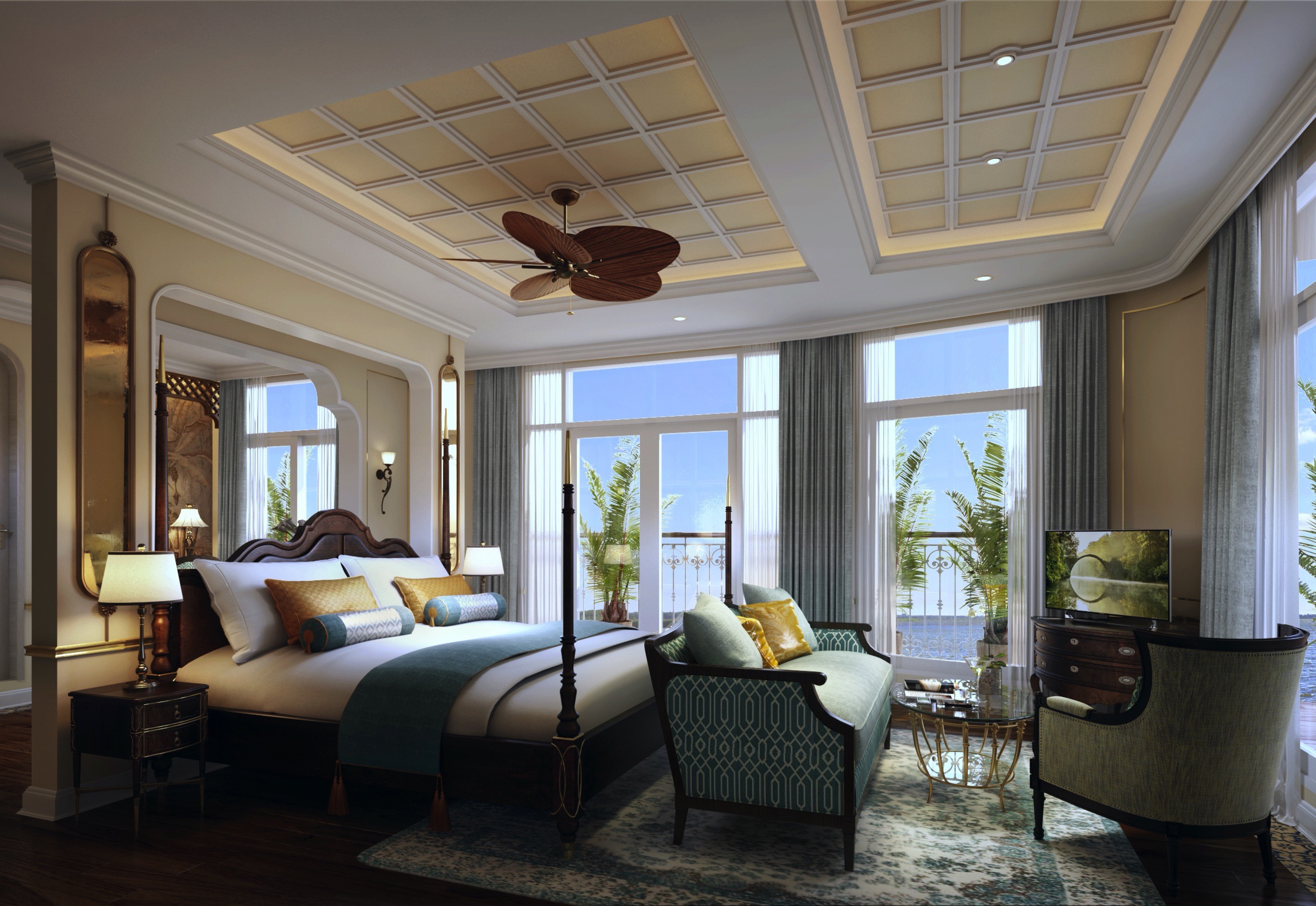
Royal Suite
- Royal Suite (924 sq ft – 85.8 sq m)
- Note that Royal Suites have a fixed four-poster bed that cannot be separated
- Note that amenities may differ from those of a Uniworld company-owned ship
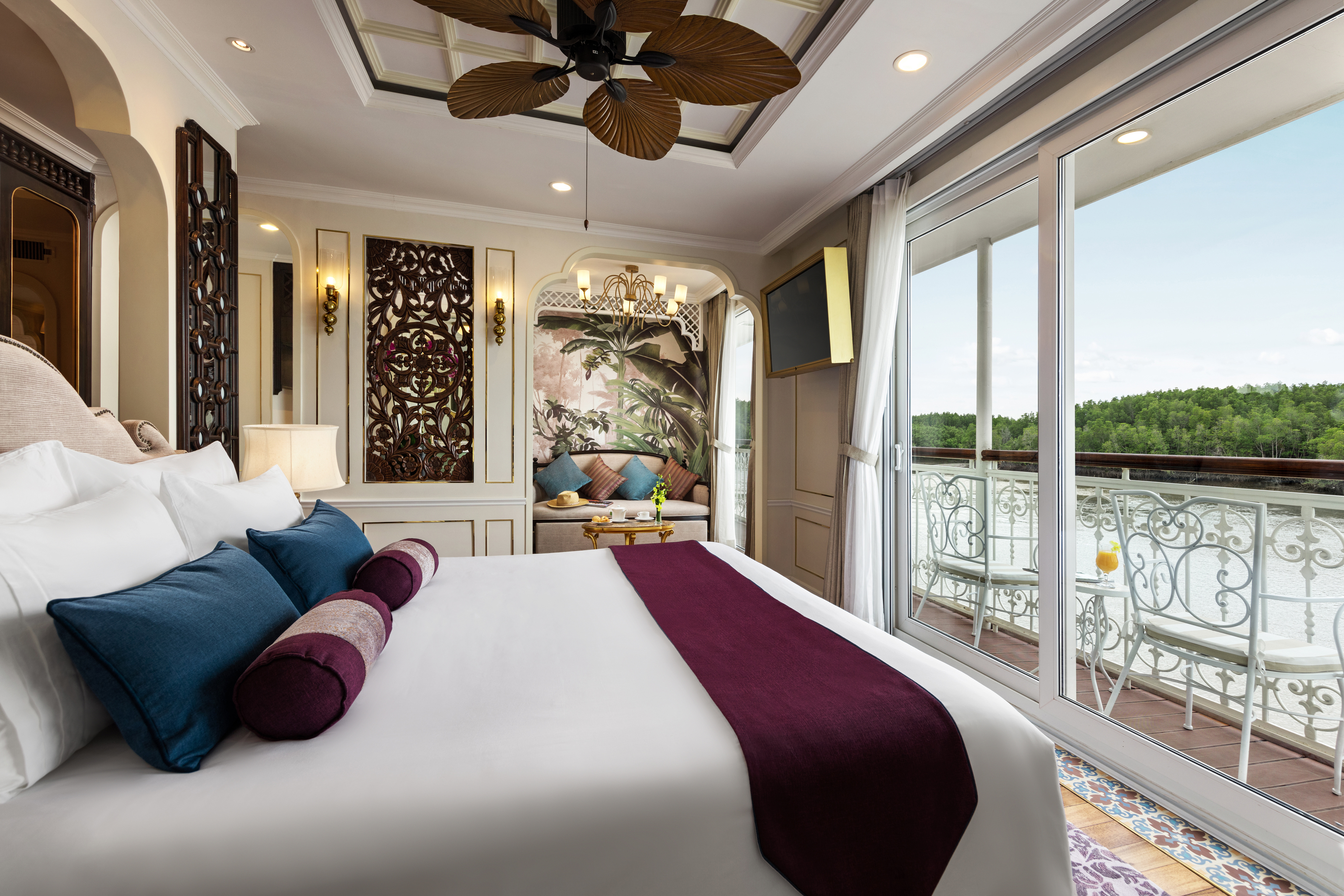
Grand Suite
- Grand Suite (551 sq ft – 51 sq m)
- Note that Grand Suites have a fixed four-poster bed that cannot be separated
- Note that amenities may differ from those of a Uniworld company-owned ship
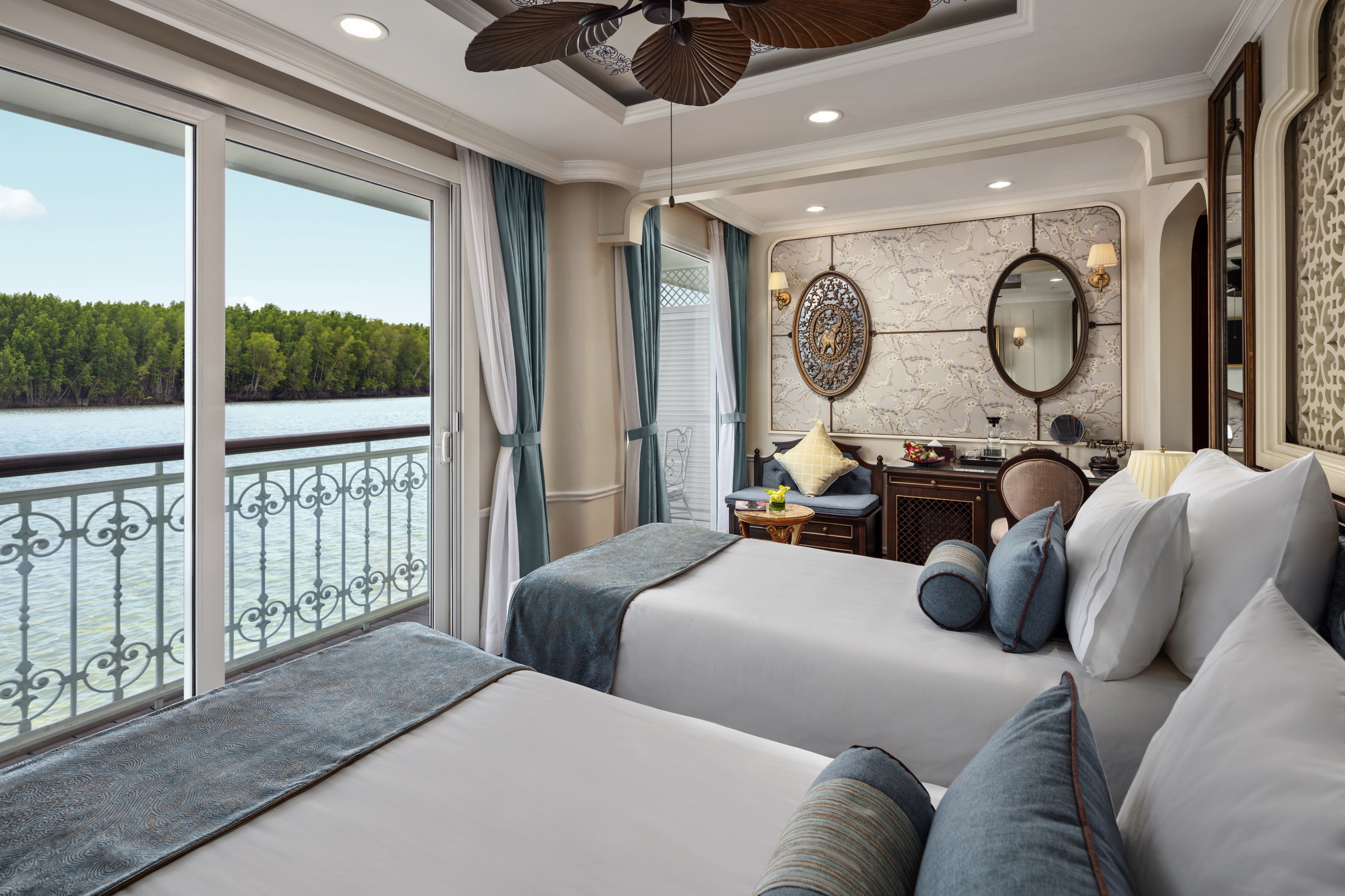
Suite
- Suite (339 sq ft – 31.5 sq m)
- Suites on the Sun Deck and Orchid Deck feature private enclosed balconies with floor-to-ceiling windows
- Suites on the Lotus Deck feature French balconies
- Note that amenities may differ from those of a Uniworld company-owned ship
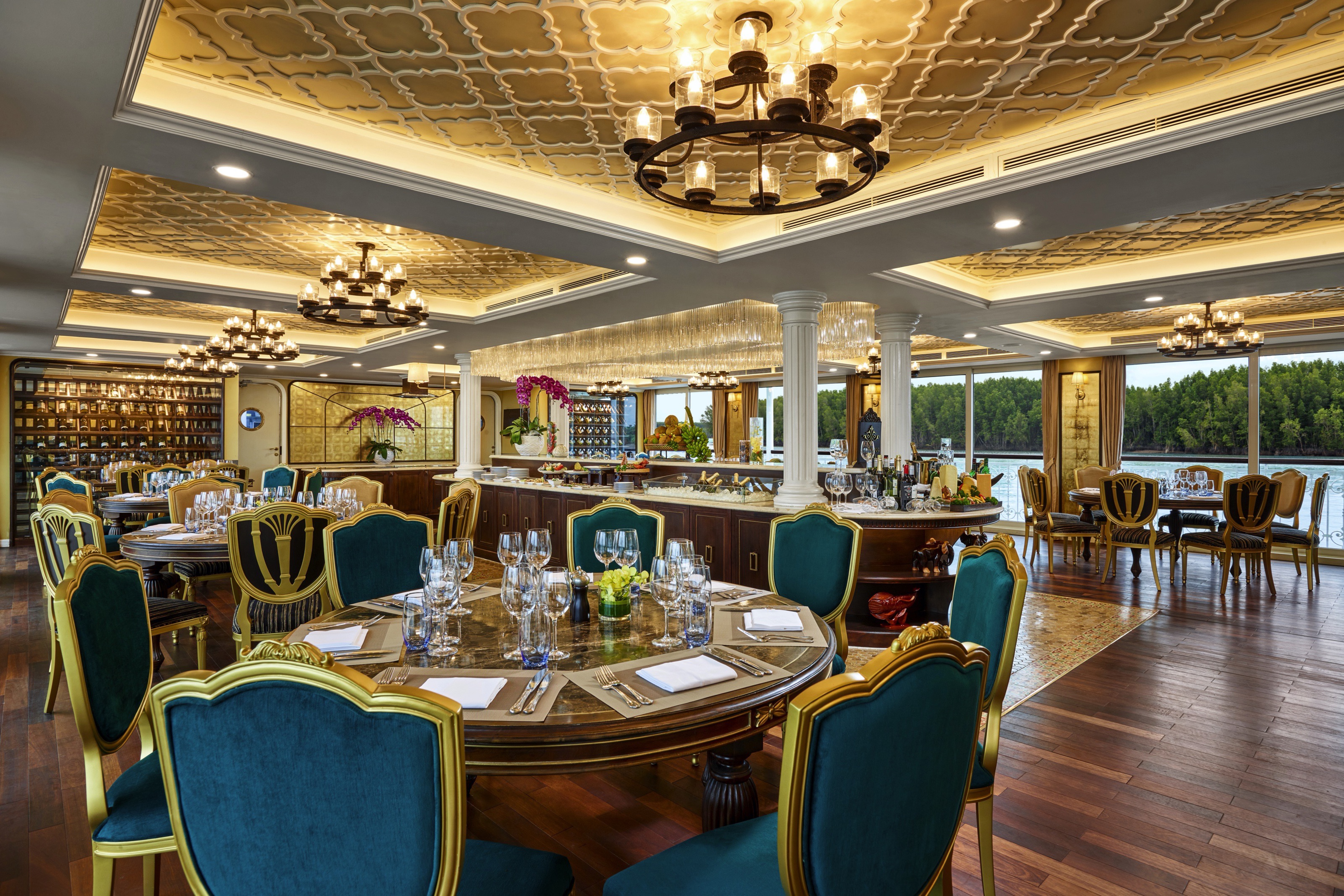
Restaurant
Culinary Excellence
We treat cooking as an art form, a very delicious art form.
From Farm to Ship: Farm-to-table isn’t just a trendy culinary buzzword around here. It’s a governing philosophy and commitment to serving you the very best local dishes created by our master chefs. When in Italy, dinner may consist of Prosciutto di Parma pizza and Osso Buco Milanese, prepared to your liking, with meats and vegetables sourced from just miles away. After a day immersed in Indian culture, your taste buds may do some immersing of their own with Gajar Shorba and Tandoori Chicken Tikka for lunch. Live brilliantly. Dine locally. That’s our story and we’re sticking to it.
Creative Culinary Options: For those interested in healthier dining options, our Traveling Lite menu features all of the flavour of our traditional menu, but with fewer calories. We also offer a variety of vegetarian and vegan options, prepared just for you. If you have a specific meal preference, just ask. Our chefs will be happy to accommodate.

Included Excursions
THE ONE THING MORE STUNNING THAN STEPPING ONBOARD IS STEPPING OFF.
Every Uniworld cruise is meticulously crafted to be an experience you won’t find anywhere else, filled with moments that are each more breathtaking than the last. We’ve gone the extra mile to ensure our included and optional excursions immerse you in the authentic culture, sights and cuisine of the places you’ll visit.
Included Excursions
VILLAGE DAY: Get an in-depth look into the quaint destinations we visit and the local people who bring them to life.
LET’S GO: These active excursions feature walking, hiking, cycling, kayaking and golfing activities.
DO AS THE LOCALS DO: Experience life like a local, from riding the subway to stopping into a café for a local treat.
NIGHTS OUT: Private after-hours tours of popular attractions and fun local nightlife experiences.
PRIVATE EXPERIENCES: From visiting a museum without the crowds to an after-hours tour of a famous landmark, these included, once-in-a-lifetime experiences are arranged privately for Uniworld guests.
MASTERPIECE COLLECTION: Tasting cheese with a cheese affineur in Rüdesheim or cruising through the streets of Bordeaux in a retro sidecar–if going above and beyond is what you’re after, you’ll be sure to enjoy our selection of Masterpiece Collection optional experiences, available for an additional cost.
CURATED SERVICES: Guests looking to treat themselves and their loved ones to a private, extraordinary experience can arrange a Curated Service. These experiences can be booked onboard, are often accompanied with a private car and/or guide, are fully customisable, and provide guests with an opportunity to create an exceptionally special moment just for them.
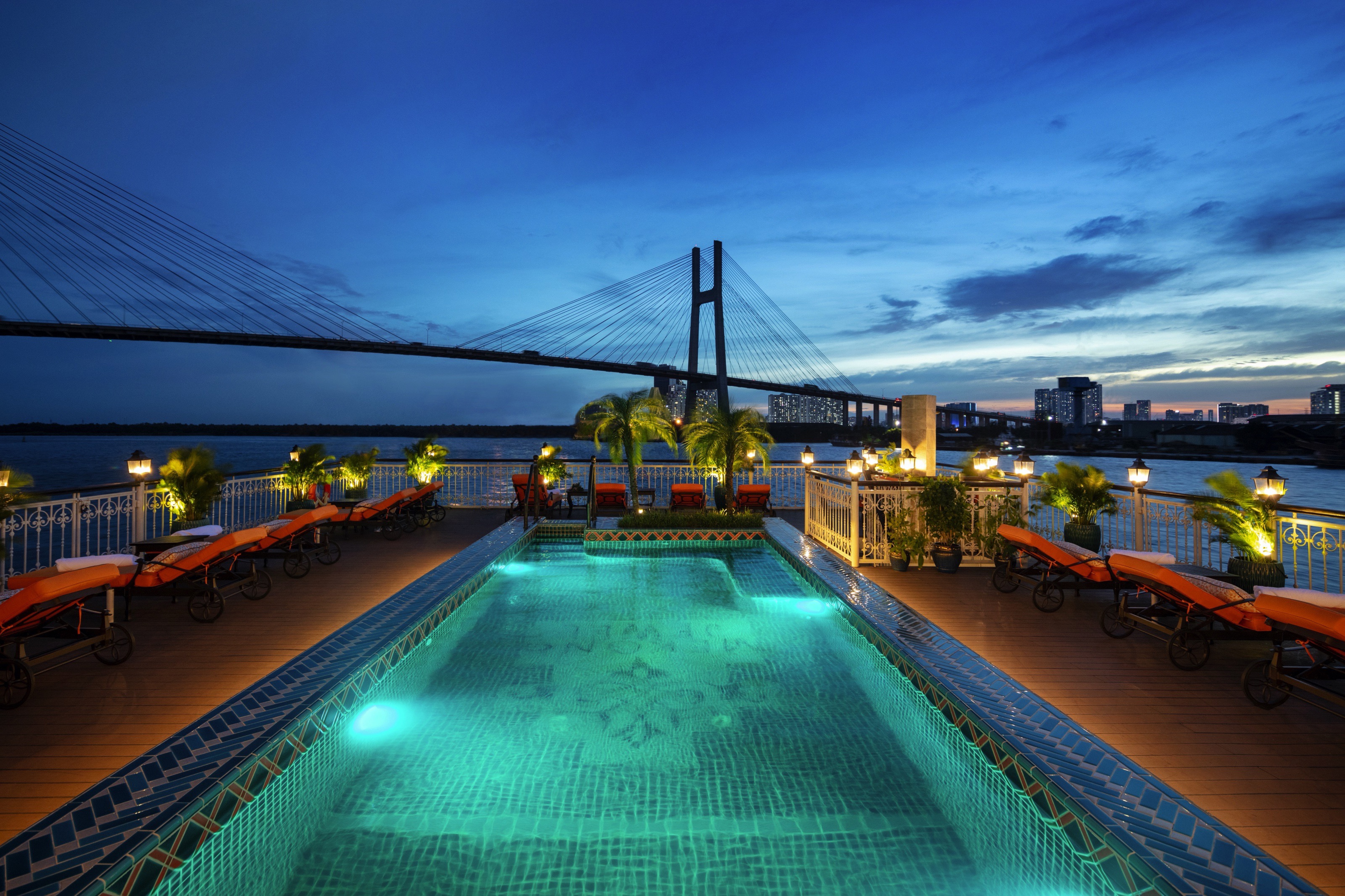
Sun Deck
The Sun Deck comprises of the Pool area, Outdoor Lounge and Library.
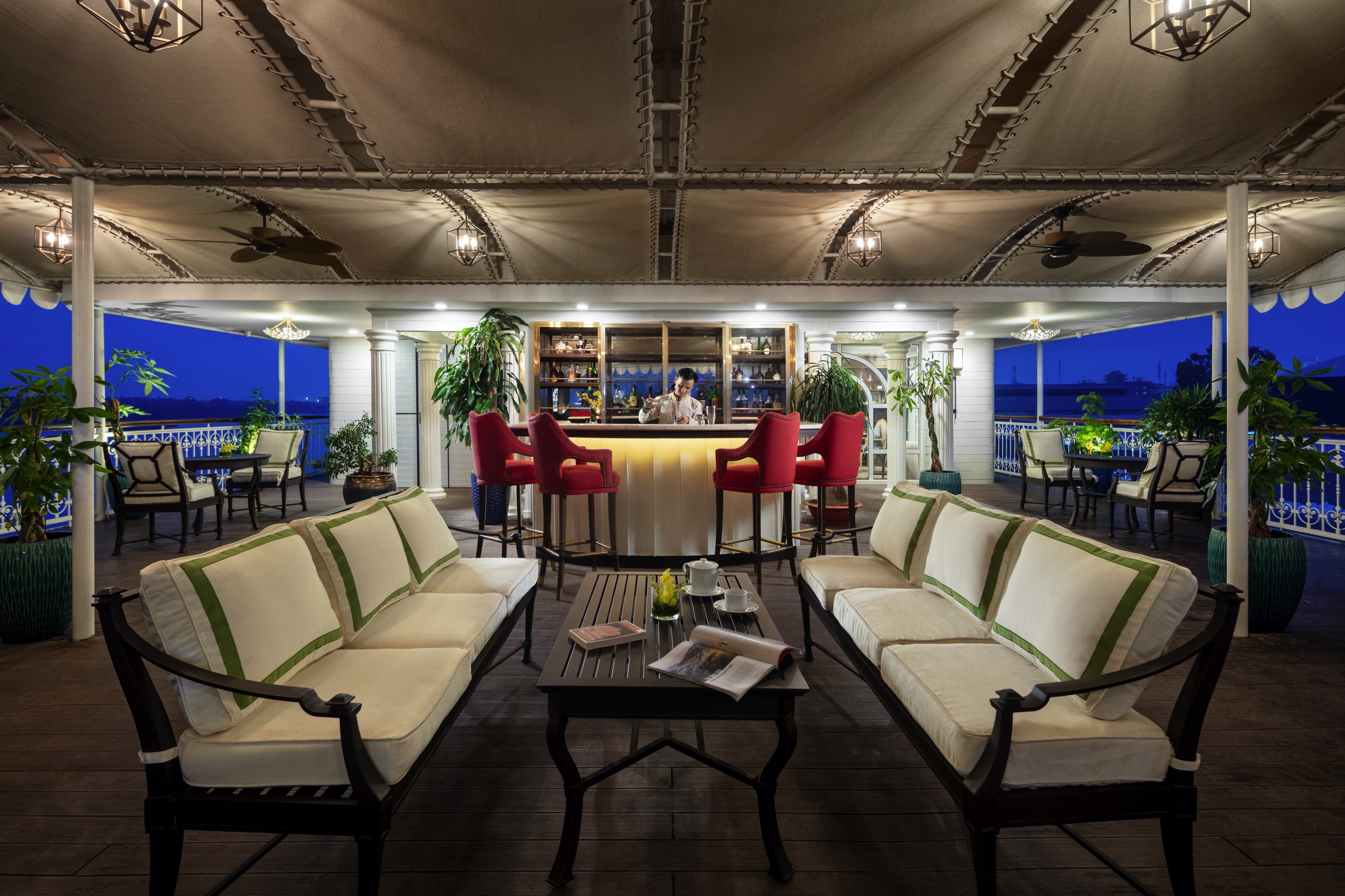
Outdoor Lounge
The Outdoor Lounge can be found on the Sun Deck.
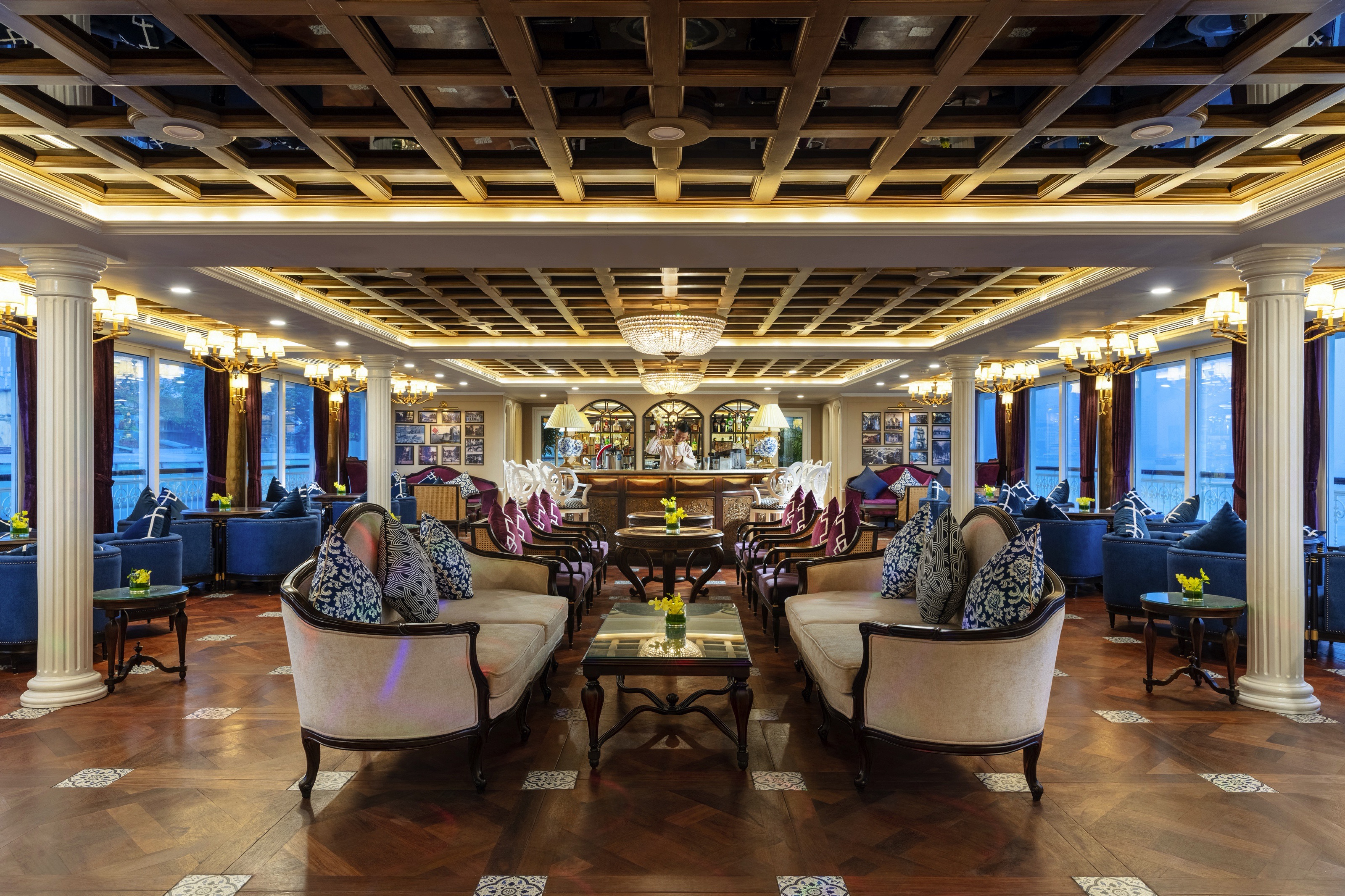
Indoor Lounge
The Indoor Lounge can be found on the Orchid Deck.
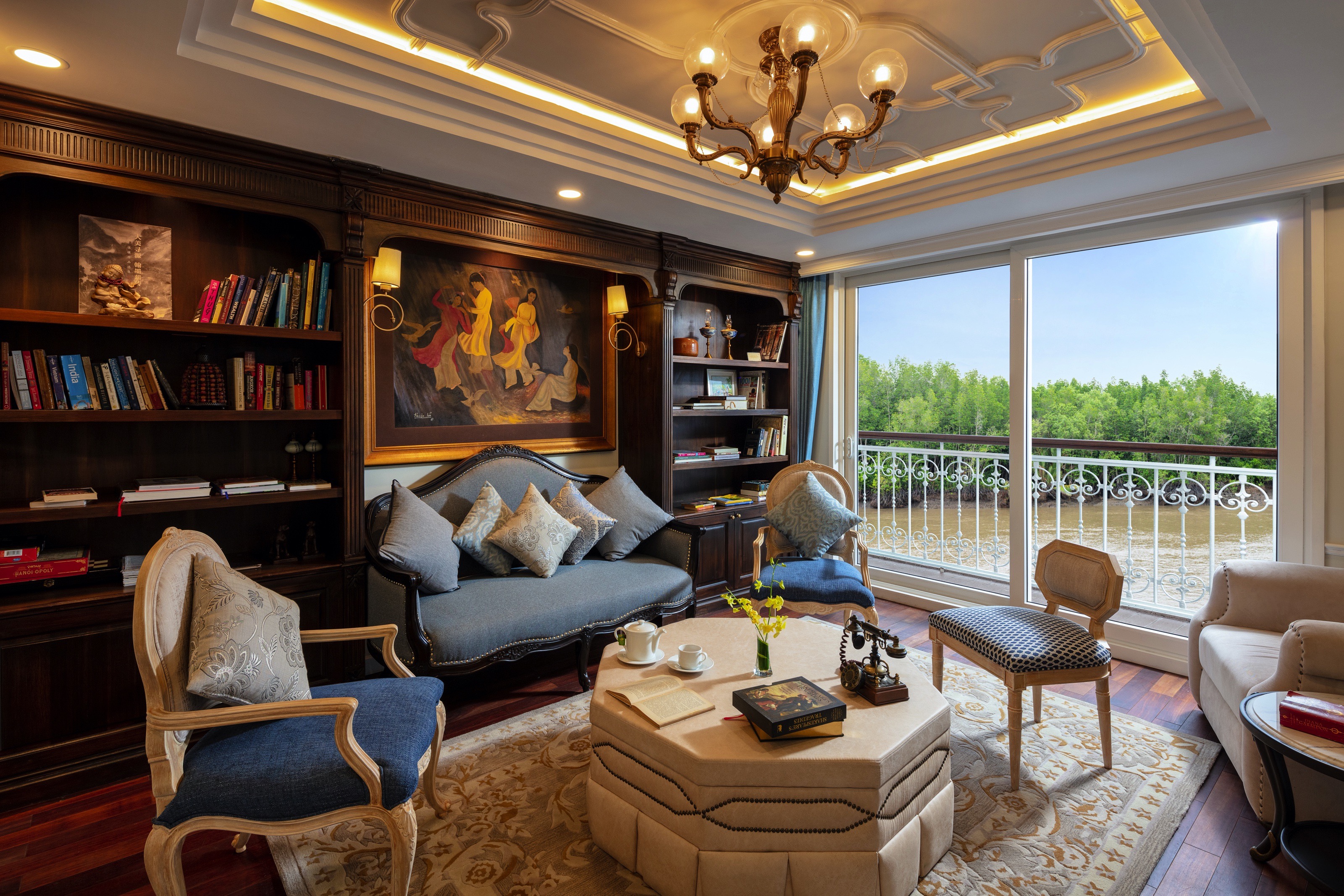
Library
The Library is located on the Sun Deck.
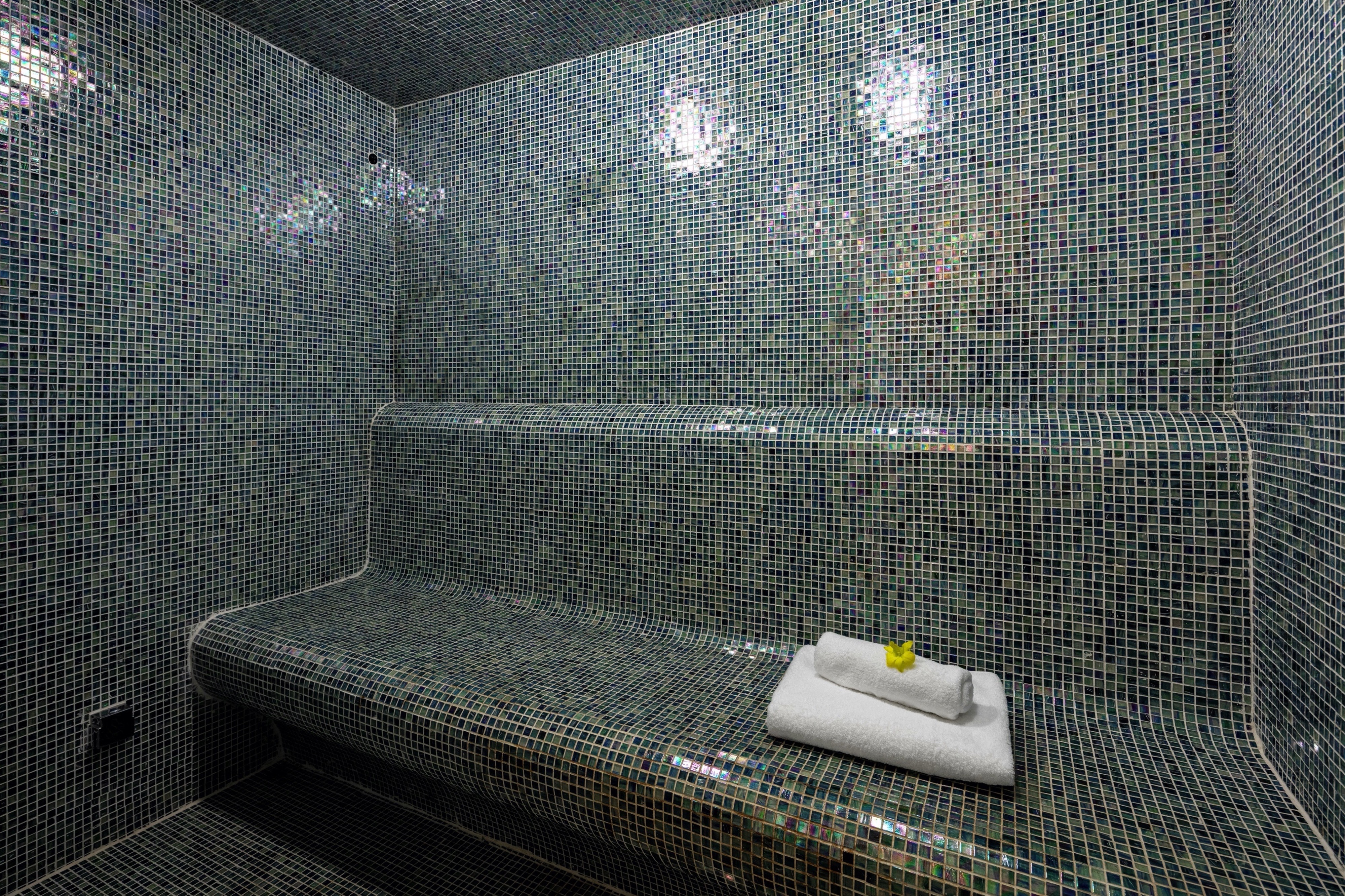
Spa
The Spa can be found on the Jasmine Deck.
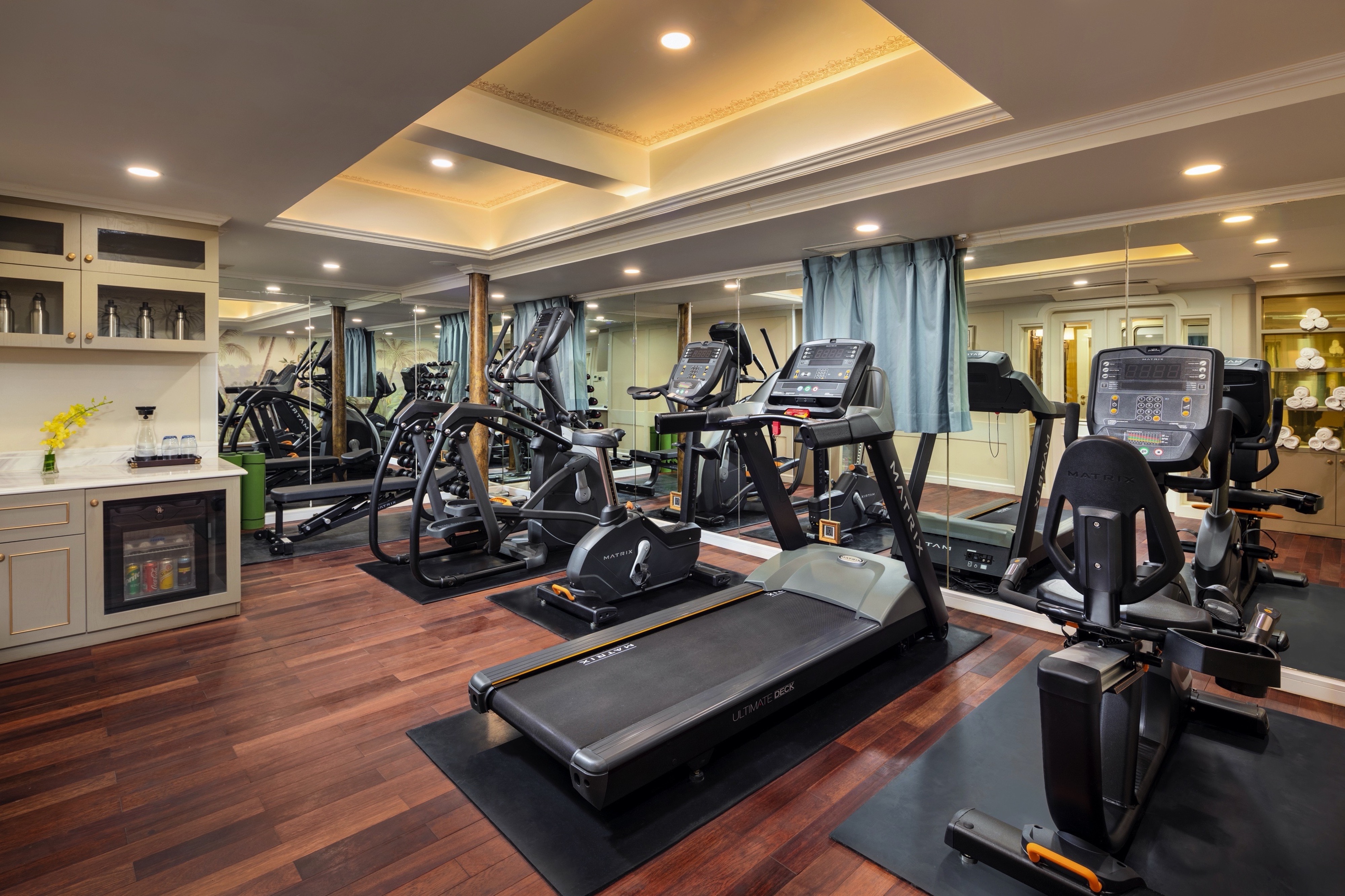
Gym
The Gym can be found on the Jasmine Deck.
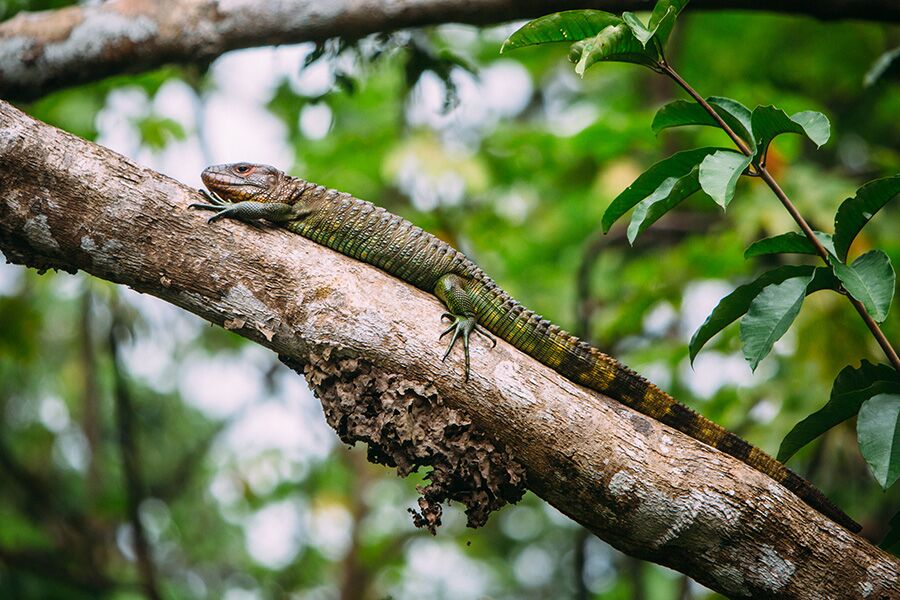
Uniworld Cares
A PASSION FOR SUSTAINABLE TOURISM AND A PENCHANT FOR GIVING BACK
Travel has provided us the chance to give back and lift up others, and we strive to do so whenever possible. We focus on making a positive impact, with a mission to #MakeTravelMatter for people, wildlife and the planet for generations to come. And as a signatory of The Glasgow Declaration that has united several travel companies and organisations to hold each other accountable to vital carbon emissions goals, we’re part of a global effort to make the travel industry better for our planet—not just for our brand.
People: We work with local artisans and small business everywhere we travel, so we can bring you authentic local experiences while also supporting the livelihoods of the people who make these communities special.
Planet: Every year, we find more ways to cut back on our carbon footprint, from committing to eliminate more than 60 types of single-use plastics to reaching Net Zero by 2050.
Wildlife: Partnering with leading wildlife organisations, we work to protect and rehabilitate elephant, rhino and big cat populations around the world, while ensuring that all of our experiences meet strict animal welfare standards. Learn more about our wildlife projects here.
How We Tread Right
MEET OUR SUSTAINABILITY OFFICER
Travel can and should be a force for good, which is why we’ve introduced an entirely new role to help keep pushing us towards a brighter future.
“What has become blatantly clear for us is that to make progress, we need to ensure that we can measure, and understand our impact. Once we can measure, only then can we manage!”
–Julie Higgins, Sustainability Officer for Uniworld
WE’RE COMMITTED TO NET ZERO BY 2050 OR SOONER
We conduct comprehensive measurements of our emissions in order to reduce and offset our carbon footprint, with the goal of reaching Net Zero carbon emissions by 2050. On our way, we’re supplementing our efforts by supporting third parties that remove the existing carbon in the atmosphere.
REDUCING FOOD WASTE ONBOARD
Food waste is one of the largest contributors to climate change, so we’ve partnered with a food waste management company, Leanpath, to reduce our carbon footprint. Their system measures how much food gets discarded after every meal onboard. With the precise measurements it will provide us, our chefs will have the data and confidence necessary to make the perfect amount of each dish. Watch the video below to learn more about how Leanpath works.
MAKE TRAVEL MATTER® EXPERIENCES
We offer a selection of included MAKE TRAVEL MATTER® Experiences on our cruises. They are chosen for the positive environmental or social impact they have on the guests who experience them, and the people and places they visit, and they support one or more of the United Nation’s Global Goals.
Say Goodbye to Single-Use Plastics
It is estimated that an additional eight million tons of plastic pour into our oceans every year. According to a report by the World Economic Forum, if nothing is done to push back against the deluge of plastics currently overwhelming our oceans there could be more plastic in the oceans than fish by 2050.
We’re banning more than 60 types of single-use plastics across all operations—including straws, water bottles, and plastic bags. It’s all part of our commitment to ensure the environment remains vibrant for generations to come.
Smoking Policy
For the comfort of all our guests, smoking is only permitted on the sun decks of our ships. Smoking is not permitted on motorcoaches. This policy applies to all forms of smoking materials including vapour e-cigarettes.
We also ask guests to refrain from smoking on shore excursions/tours, especially since many historical sites and other tourist attractions are now smoke-free as well.
Dress Code
For destinations in EUROPE: It’s best to prepare for a variety of weather conditions, depending on your travel season and the regions through which you will be cruising. Layering clothing items is always your best bet, as this allows you to adjust to most temperatures, including artificially maintained temperatures, by adding or removing items throughout the day.
Comfortable, sporty, smart-casual daywear is appropriate both onshore and onboard. Everyday slacks, khakis, walking shorts and everyday skirts/dresses are recommended. For warmer temperatures, we suggest lightweight clothing that can be layered, such as a mix of sweaters, lightweight knit shirts, slacks and walking shorts. For early spring and late fall departures, you’ll find sweatshirts, heavier cotton or wool tops and long-sleeved shirts, and corduroy or heavy khaki pants perfectly suitable. Mix and-match colour schemes work best to help keep baggage light. You will participate in a significant amount of walking over uneven terrain during your time ashore. We recommend comfortable walking shoes with good ankle support. Sturdy sandals are another good option. For evenings, any resort-type wear is perfectly suitable; however, we do ask that you not wear shorts to dinner. Men may want to bring one sport jacket for dressier restaurant venues and for special events onboard such as the Captain’s Welcome and Farewell festivities. Women may wish to bring a cocktail dress or two for finer dining or entertainment experiences. Don’t forget to pack a lightweight waterproof jacket (preferably hooded) or even a heavier weight wind-breaker for colder temperatures.
We recommend wearing comfortable, smart-casual clothing both onshore and onboard. We also suggest sturdy walking shoes, as you will do a significant amount of walking on shore excursions, often over cobblestones or uneven terrain. A sun hat, rain gear, and a coat or wrap for chilly evenings are useful items to have. While there is no formal dress code for dining ashore, concerts, special events onboard, etc., men may want to bring a sports jacket and women a cocktail dress or pantsuit. Neckties are optional. Please note that shorts are not allowed at dinner aboard the ship.
For our EXOTICS destinations: These programs are very different from European river programs; attire is more casual due to the region’s warmer temperatures. During the cruise/tour portion of your program, comfortable, lightweight clothing in lighter colours is strongly recommended. We suggest clothing that can be layered, such as a mix of cotton shirts, lightweight knit shirts, sweaters, everyday khakis, slacks, skirts/dresses, walking shorts and sun hats.
Prepare for a variety of weather conditions, depending on your travel season and the regions through which you will be cruising. Layering clothing items is always your best bet, as this allows you to adjust to most temperatures, including artificially maintained temperatures, by removing or adding items throughout the day. Mix/match colour schemes work best to help keep baggage light.
You will participate in a significant amount of walking over uneven terrain during your time ashore. We recommend comfortable walking shoes with good ankle support. Sturdy sandals are another good option.
Don’t forget to pack a lightweight waterproof jacket (preferably hooded) or even a heavy weight windbreaker for colder temperatures, especially during early spring, fall and winter departures.
PLEASE NOTE: To enter the temples and other holy sites, guests should ensure that their shoulders and knees are covered.
Egypt: For evenings, we recommend casual and cool attire; however, we require footwear to be worn at all times in the dining room. Sport jackets and cocktail dresses are not needed at any time during this program. You may wish to pack at least one “smart casual” outfit for the onboard Gala Reception.
For those on the Jordan extension, while sleeping quarters will be heated, the winter months can drop below freezing at night. Please pack accordingly for outside weather.
India, Vietnam & Cambodia: For evenings, we recommend casual and cool attire; however, we require footwear to be worn at all times in the dining room. Sport jackets and cocktail dresses are not needed at any time during this program.
Peru: We recommend comfortable walking shoes, quick drying and lightweight clothing, lightweight long pants and rain gear, long-sleeved tops for jungle excursions, wide-brimmed hat, extra socks, and a bathing suit.
Laundry
Most ships have either a self-serve laundrette (with ironing board) or laundry service for an additional fee. Please contact info@uniworld.com to find out what services your ship offers. No dry cleaning services are available on any ship.
Special Dietary Requirements
Kindly inform us in advance if you have specific dietary requests (e.g., low-fat, low-calorie, gluten-free, sugar-free, vegetarian, etc.). This information can be provided to us when completing your Passenger Information Form. We have a “Travelling Lite” menu for guests seeking more health-conscious options, as well as light lunches, vegetarian options, and generous buffets that offer something for everyone. We will do our very best to accommodate your needs given the resources available to us.
Wi-Fi & Internet Access
Select ships offer complimentary Wi-Fi access. Please email us at info@uniworld.com to find out if Wi-Fi is available onboard. Service may be briefly interrupted in remote areas, while sailing, or when moving through locks, and the speed will likely be slower than what you are used to back home.
Age Restrictions
In our experience, most young children—especially those under 4—are simply not yet old enough to enjoy river cruising. We make no special arrangements for little ones and offer few kid-friendly activities onboard or onshore. Please note: Our Generations program departures include programs and services designed for families traveling with children. Adults accompanying children are responsible for their safety and behaviour onboard and onshore.
Europe, Asia, India, and Egypt: Guests must be 4 years of age or older. Guests who are less than 18 years of age must be accompanied by a parent or guardian and booked in a cabin with someone who is 21 years of age or older.
Peru: Guests must be 7 years of age or older. Guests under 21 must be booked in a cabin with someone who is 25 years of age or older, or traveling with a parent or guardian who is booked in a connecting suite. Some excursions may not be suitable for young children.
The Most All-Inclusive Amenities
There’s all-inclusive, and then there’s the unmatched level of inclusive luxurious amenities that only we provide. To ensure truly carefree and effortless travel, we’ve gone ahead and included it all–so the only thing you have to do is sit back, relax and enjoy your vacation.
- UNLIMITED premium spirits and wines
- Delicious, FIVE-STAR, farm-to-table cuisine
- Your choice of CAREFULLY CURATED EXCURSIONS
- ALL GRATUITIES onboard
- Onboard FITNESS CENTER and WELLNESS CLASSES with a certified wellness instructor
- All scheduled AIRPORT TRANSFERS
- BICYCLES and NORDIC WALKING STICKS for onshore use
- Shipwide INTERNET and WI-FI access
- Onboard ENTERTAINMENT and ENRICHMENT
Disabled Facilities
Passengers are required to advise the Company at time of booking of any physical, medical, or other special needs that require accommodation. After the time of booking, should a Passenger develop a physical or medical condition that requires accommodation, the Passenger is required to advise the Company.
The Company may impose health and safety requirements necessary for the safe operation of the cruise-tour, and for the wellbeing of our Passengers and crew. The Company may also exclude an individual from participating in a tour or activity if that individual’s participation poses a direct threat to health or safety. To stop the spread of contagious illnesses, the Company or local authorities may require the isolation or quarantine of Passengers. These measures will not result in the eligibility for a refund of unused features or services.
The Company welcomes Passengers with special needs or disabilities, however please note that the Company does not provide personal medical or mobility devices (such as wheelchairs, hearing aids, or prescription eye glasses) or services of a personal nature (such as pushing a wheelchair or assistance in eating, toileting, or dressing). A companion capable of providing such assistance must accompany any Passenger who requires services of a personal nature.
The Company does not employ medical personnel. Any necessary medical attention will be provided by a local facility at the passenger’s expense. The Company is not responsible or liable for any losses or costs incurred as a result of medical services obtained while on tour, or for the quality of the care or services received.
Passengers should be aware some tours include rough terrain, extensive walking over cobblestone streets, uneven pavement, stairs, and locations which may not be easily accessible or accessible by wheelchair. During the tour, the Company may make arrangements with carriers, hotels, and other independent suppliers to provide travel services. These parties are independent entities over which the Company has no control. Accommodations on international tours may differ from those in your home country. The Company cannot guarantee disability access or accommodations for passengers travelling on international tours.
The Company may, in its sole discretion, decline the booking of any passenger or remove any passenger who cannot comply or refuses to comply with Company’s Terms and Conditions.

Sun Deck
- Pool
- Outdoor Lounge
- Library
- Suite
- Grand Suite
- Royal Suite

Orchid Deck
- Restaurant
- Indoor Lounge
- Reception
- Gift Shop
- Suite

Lotus Deck
- Dining Hall
- Suite

Jasmine Deck
- Laundry
- Salon
- Spa
- Gym
- Sauma & Steam
